Business Economics: Price Elasticity of Demand and Trade Analysis
VerifiedAdded on 2020/04/13
|5
|746
|45
Homework Assignment
AI Summary
This business economics assignment explores two key concepts: price elasticity of demand and international trade. The assignment begins by defining price elasticity of demand, explaining its significance in microeconomics, and detailing different types of elasticity (elastic, inelastic, unitary, and perfectly inelastic). It then applies these concepts by discussing how firms, like Apple, can use elasticity to make pricing decisions. The second part of the assignment covers absolute and comparative advantage, key drivers behind international trade. It defines absolute advantage, focusing on labor productivity, and then explains comparative advantage using the concept of opportunity cost. The assignment provides a clear example illustrating how countries specialize in production and engage in trade based on comparative advantages. The assignment concludes with references to relevant academic sources.
1 out of 5
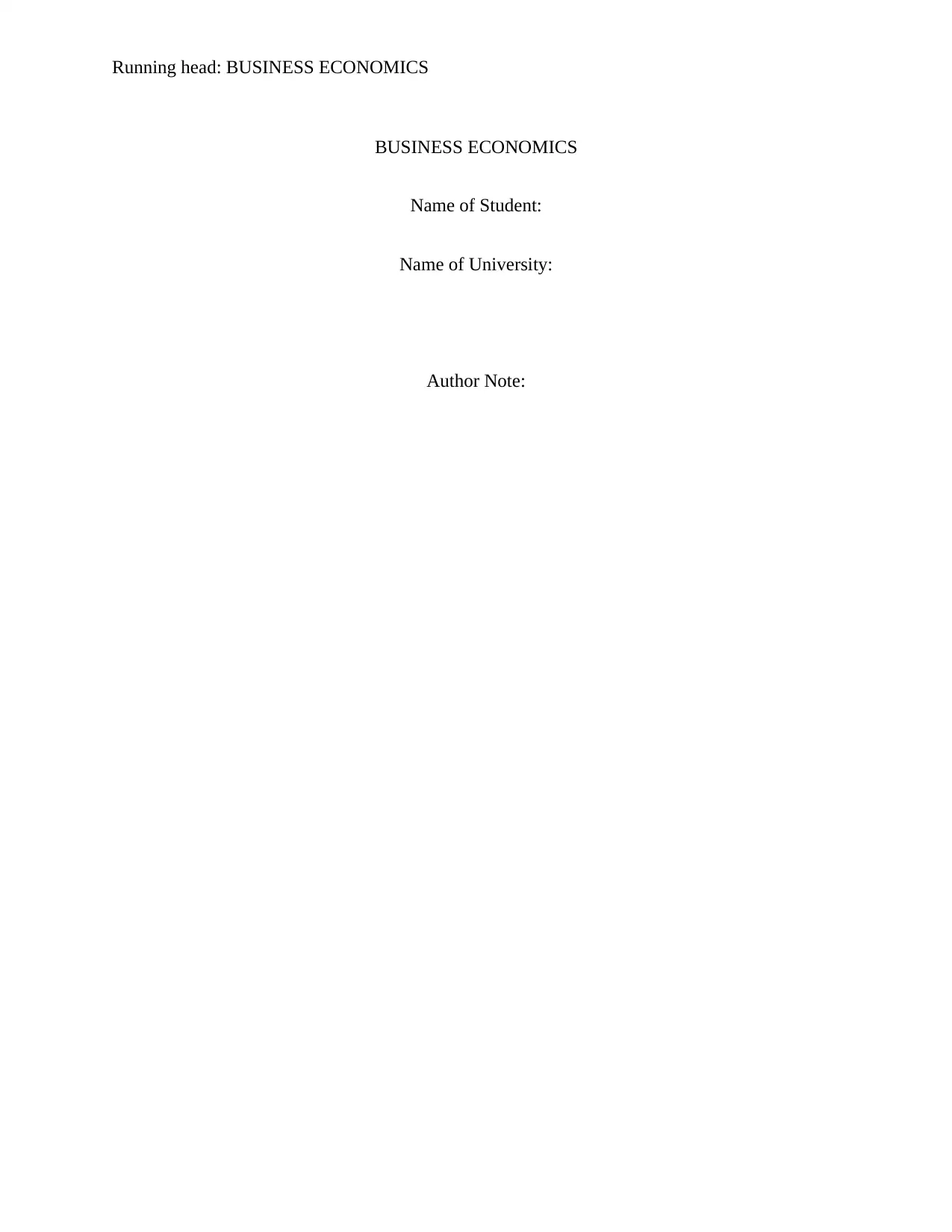
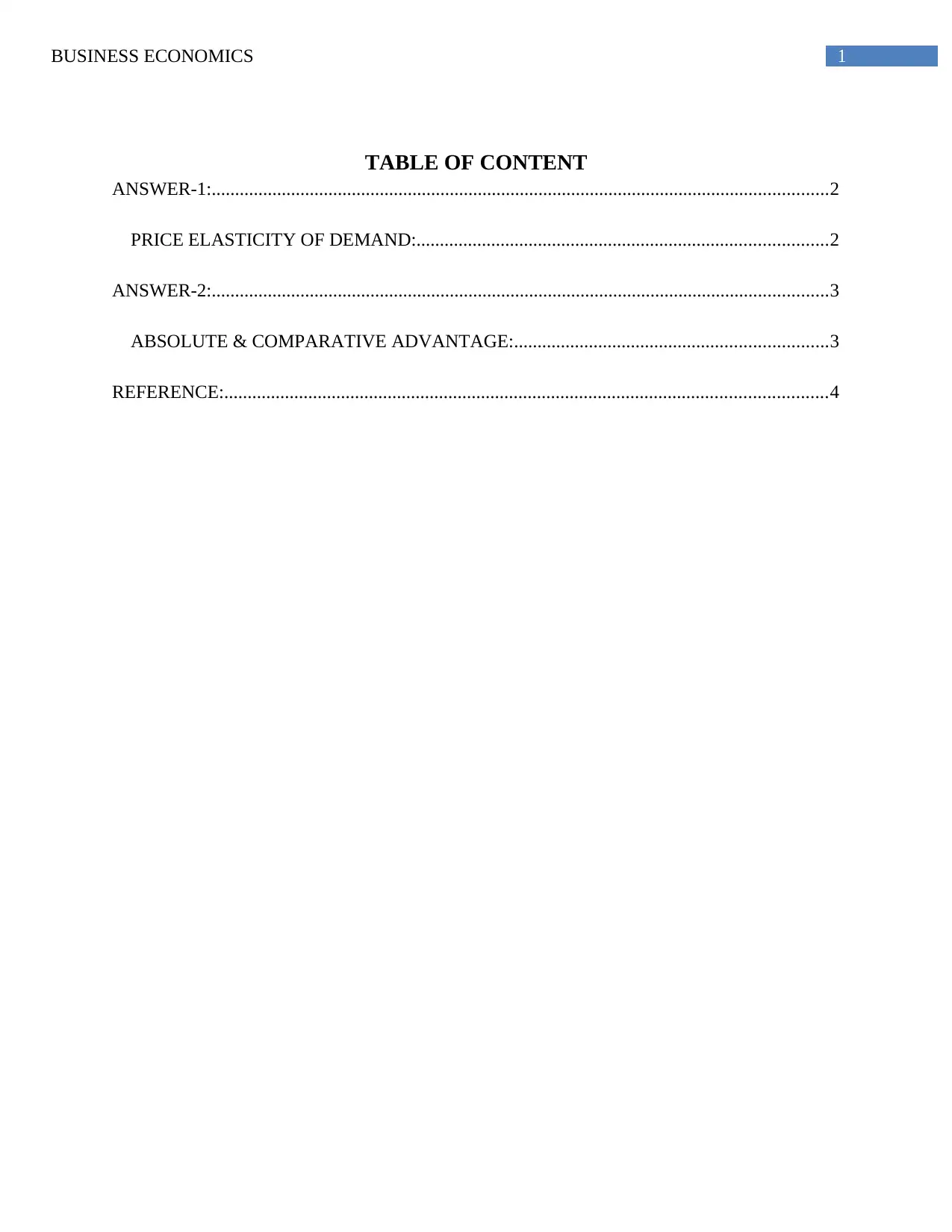
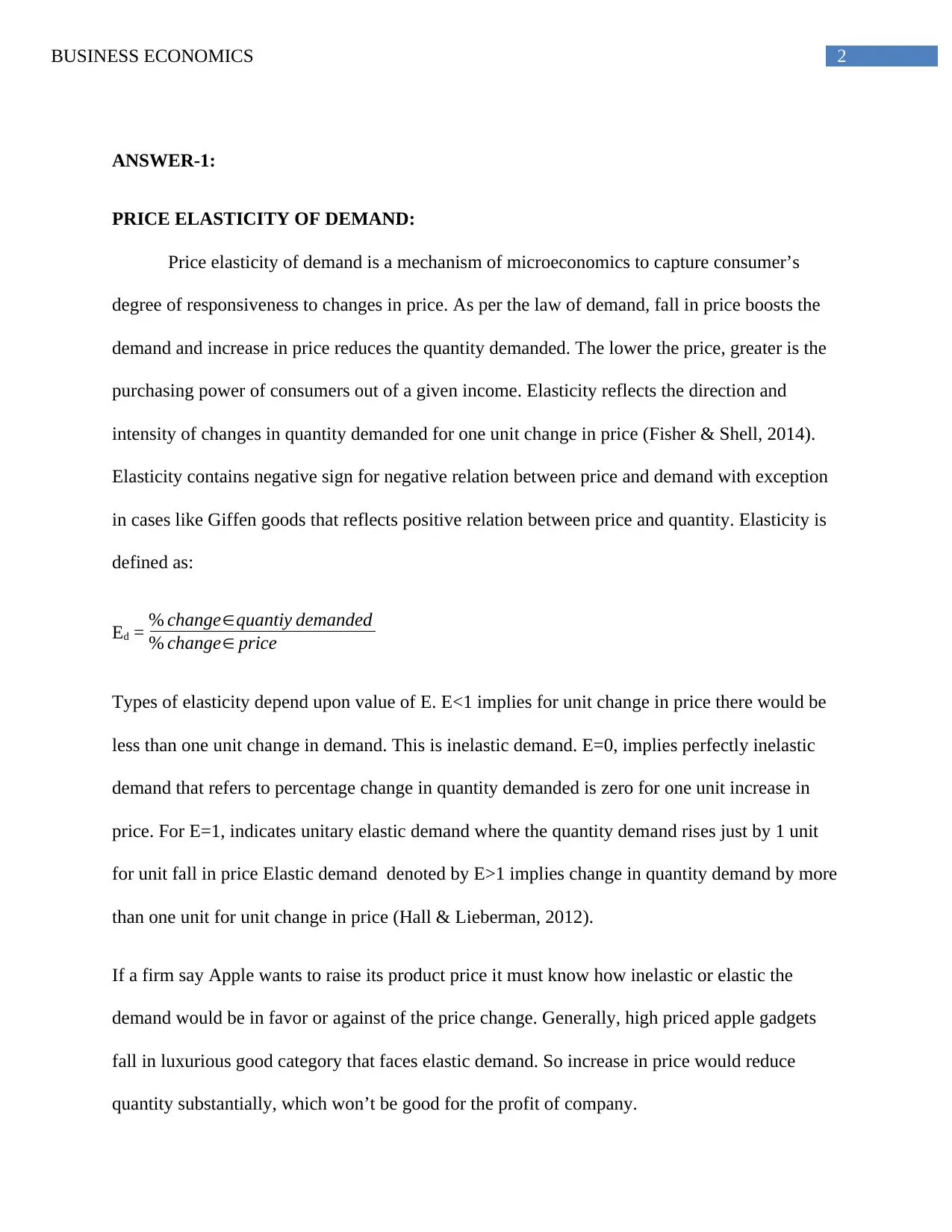

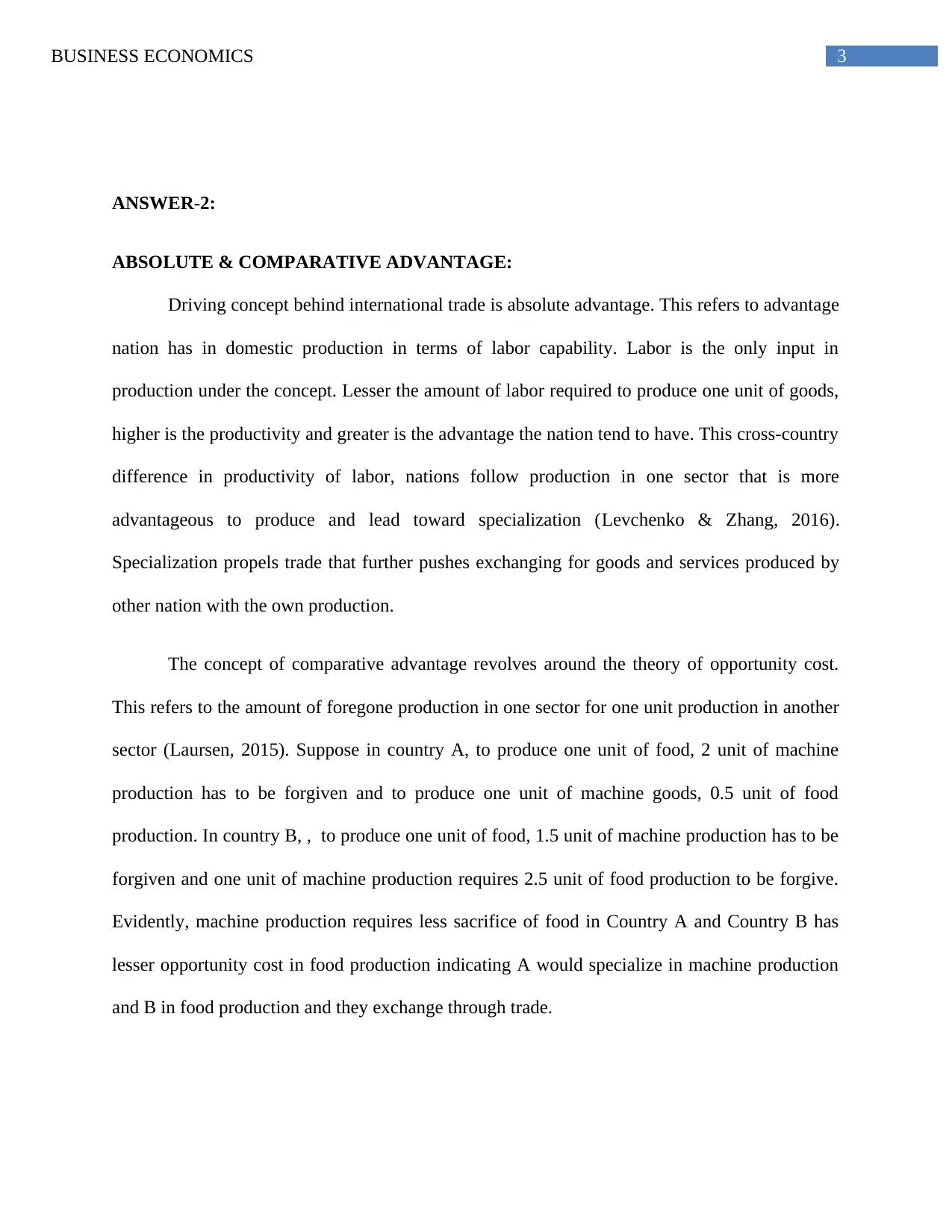
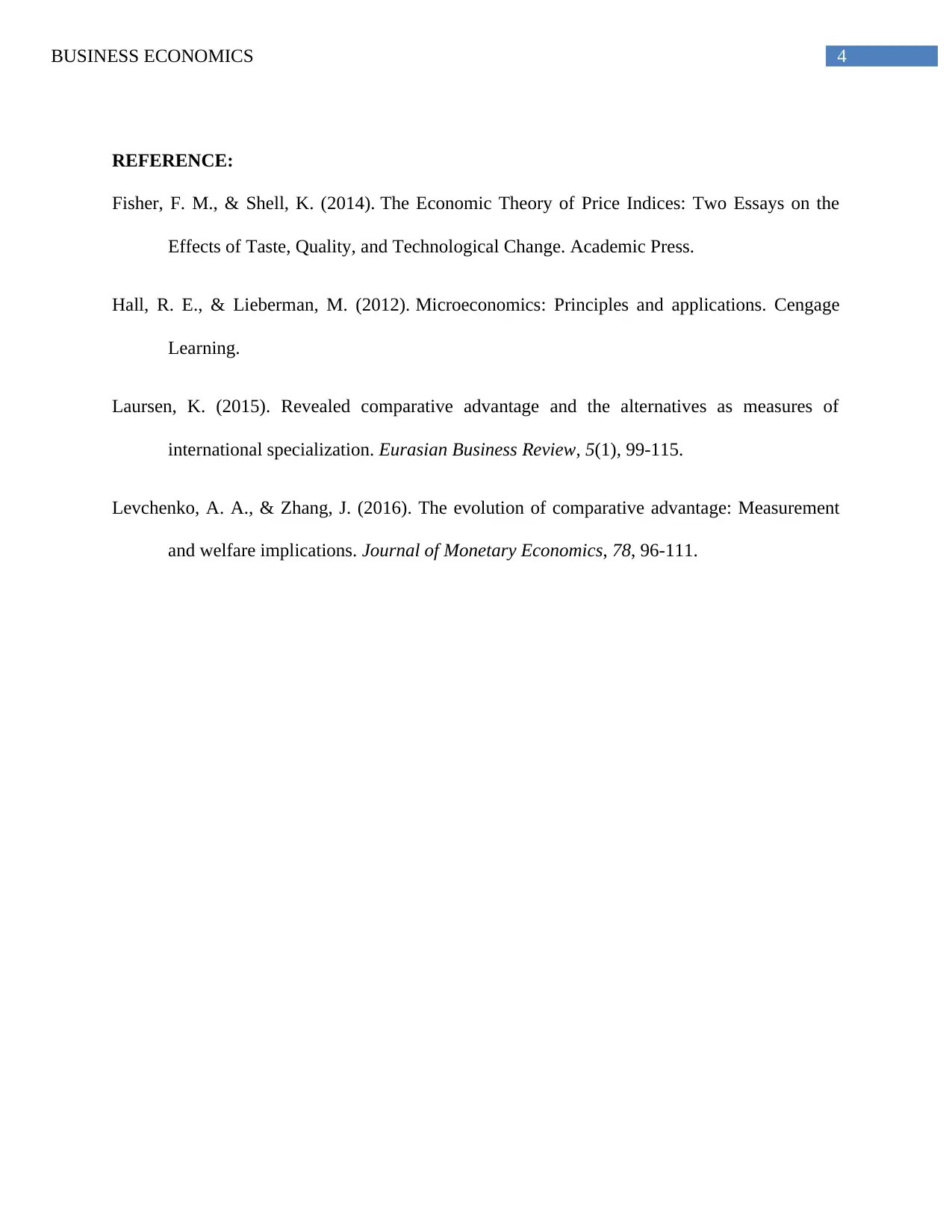






![[object Object]](/_next/static/media/star-bottom.7253800d.svg)